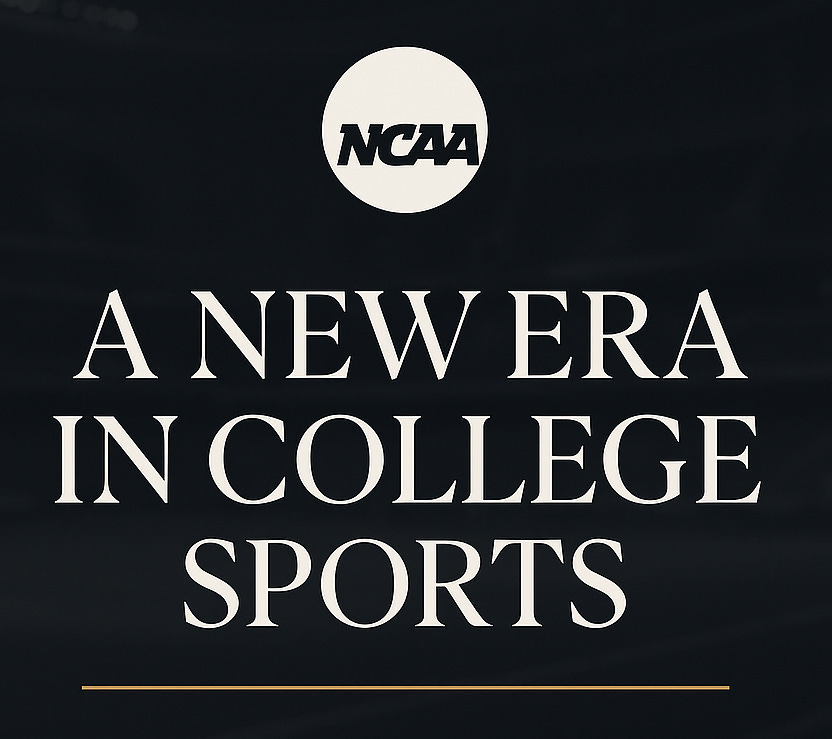A New Era in College Sports: How the NCAA Settlement Changes The Game
A full breakdown on the giant shift in college athletics
On June 7, a federal judge approved the biggest shift in college athletics since Title IX. The NCAA and its Division I member schools have agreed to a sweeping $2.8 billion antitrust settlement that will reshape college sports over the next decade.
This historic case, House v. NCAA, was brought by a group of former college athletes who argued that NCAA rules had illegally prevented them from earning money from their name, image, and likeness (NIL). After years of legal pressure and public backlash over the NCAA's amateurism model, the parties reached a settlement that compensates athletes for past restrictions and sets up a future where schools can directly share revenue with players.
The headline number is $2.8 billion. That’s how much the NCAA and its conferences will pay over the next 10 years to student-athletes who were denied NIL opportunities in the past. These back payments will mostly go to football and men’s basketball players—with an average of $120,000 per athlete spread over a decade—but women’s basketball and Olympic sports athletes will also receive a portion. The money comes from reduced NCAA payouts to schools, especially from March Madness and College Football Playoff revenues.
But even more important than backpay is what comes next: for the first time, schools can directly share revenue with their athletes. Starting July 1, 2025, schools that opt into the settlement can distribute up to $20.5 million a year to athletes. That number will rise over time and is currently capped at 22% of a school’s athletic revenue. This money is separate from NIL deals and represents a new quasi-salary model. Each school can choose how to divide the money among teams and athletes. As expected, football and men’s basketball will likely receive the largest shares.
Not every school plays football. And that’s where schools like the College of Charleston may quietly gain a major edge. Without a football program, more of the revenue-sharing pool can go to other sports. That gives Charleston a chance to be even more competitive in recruiting and retaining top talent. In this new system, mid-major programs without football could become much more appealing to student-athletes.
Another major change: the NCAA will eliminate scholarship limits and replace them with roster caps. Teams can now offer as many scholarships as they like, as long as they don’t exceed the roster limit. For example, basketball teams can now offer up to 15 scholarships (up from 13), and baseball teams up to 34 (up from 11.7). This may create more scholarship opportunities, but could also lead to fewer walk-ons or rescinded offers to stay under the cap at bigger schools.
To bring more structure to the chaotic NIL landscape, a third-party platform called NIL GO will launch. Developed by consulting firm Deloitte, NIL GO will serve as a clearinghouse to review all NIL deals worth $600 or more, using a fair market value algorithm to flag deals that appear inflated or unrelated to an athlete’s true publicity value. If a deal is flagged, athletes can revise the terms or submit to binding arbitration—a private dispute process overseen by a neutral expert. Because arbitration awards are rarely overturned in court, this process is expected to limit lawsuits and resolve disputes behind closed doors.
What makes NIL GO notable is not just its function, but who’s behind it. Deloitte has deep roots in both consulting and college athletics. Its dual role—consulting with athletic departments like Kansas and Alabama A&M while also enforcing NIL rules—raises concerns about conflicts of interest. Deloitte says its NIL enforcement team will operate separately from its advisory arm, with oversight from a new independent body.
That body is the College Sports Commission (CSC), formed by the Power Four conferences as part of the settlement. Led by former federal prosecutor and MLB executive Bryan Seeley, the CSC will oversee NIL GO and serve as the enforcement arm. However, it's still defining its rules, investigative powers, and penalties. The system will rely on self-reporting and voluntary compliance, which makes enforcement tricky without subpoena power or guaranteed cooperation from schools and donors. Whether the CSC will curb improper inducements or simply push them back underground remains uncertain.
This settlement doesn’t solve every issue. Legal battles are likely to continue. Title IX lawsuits are already in the works, and some schools or states may resist the changes. But the foundation of college sports is shifting. Athletes are finally being treated more like the revenue-generators they are. Whether that leads to stronger programs, more fairness, or new challenges remains to be seen. One thing is clear: this is a major turning point in college sports and things will never be the same.
The Charleston Edge
The Charleston Edge Collective is dedicated to empowering CofC student-athletes through NIL opportunities, ensuring they have the resources to build their brands and succeed both on and off the playing surface.
Support The Charleston Edge Collective
🔗 Donate Here: www.thecharlestonedge.com
📲 Follow us on Social Media:
Instagram: @thecharlestonedge
Twitter/X: @chsedgenil




One of the unintended consequences of this no one really is talking about with this settlement which essentially lets schools pay student-athletes directly is that they become employees. Now that they’re employees Equal Opportunity Employment enters the picture which is going to drastically alter the product people see on the court and on the field.
It truly is a new era! There are so many things that are going to change in the short and long term future - many of which we can’t even quite comprehend yet. And the changes aren’t only going to be monetary, they’re going to land on many different levels.